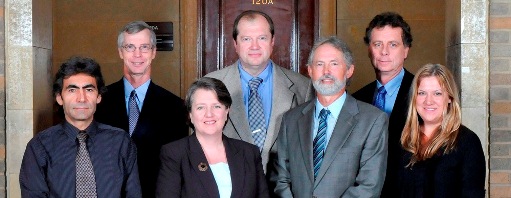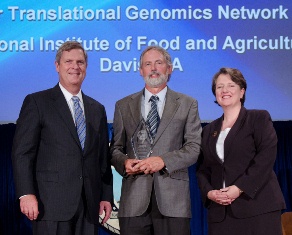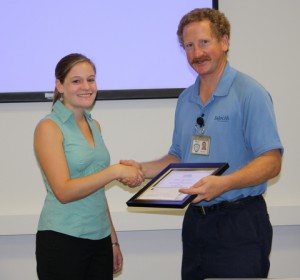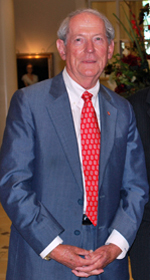 Parental safety concerns may prevent children from getting good exercise, according to a new North Carolina State University study that examined how families use neighborhood parks.
Parental safety concerns may prevent children from getting good exercise, according to a new North Carolina State University study that examined how families use neighborhood parks.
Results from the study suggest that children who were monitored too closely by hovering “helicopter” parents were less likely to engage in higher levels of physical activity.
“It’s a catch-22 for today’s parents, unfortunately. Many parents are worried about the safety of their children, so they tend to hover,” says Dr. Jason Bocarro, associate professor of parks, recreation and tourism management at NC State. “The worry is – especially as we are seeing childhood obesity become an epidemic in this country – hovering is keeping kids from running around and playing with their friends and neighbors, and instead maybe sitting in front of the computer or television.”
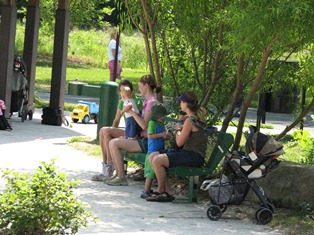
Based on these findings, researchers including Robin Moore, professor of landscape architecture and director of the Natural Learning Initiative at NC State, hope to provide guidance to parks and recreation departments and park designers about ways to better design public parks. “If children’s play environments are designed for the whole family with comfortable, shady places to sit and observe kids playing from a distance, parents may be less inclined to ‘helicopter’ and impede spontaneous play – which can also be increased by providing lots of environmental choice and diversity,” Moore says.
The research showed that formal programs and facilities – like soccer programs or basketball courts – increase the likelihood of children ages five and up engaging in a higher level of activity. Also, as any school teacher can tell you, the presence of even one or two children with higher physical activity levels will increase those levels in other kids. The study also found that girls were less likely to be observed in parks, and less likely to be observed in higher levels of physical activity.
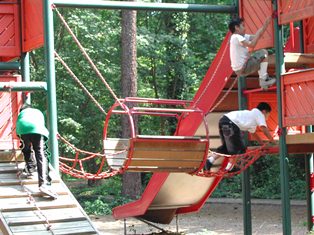 A group of 16 trained observers – undergraduate and graduate students from NC State –systematically examined 20 neighborhood parks in Durham, N.C. from 10 a.m. and 7 p.m. for an 8-week period to learn how families use park facilities. While scanning different areas in the park, the researchers counted the children, recorded their gender and apparent age group (0-5, 6-12 and 13-18), and coded their activity level as sedentary, moderately active or vigorously active. Making note of the differences in age gave researchers more sensitive data, since they were able to assess how different areas of the park meet the needs of different age groups.
A group of 16 trained observers – undergraduate and graduate students from NC State –systematically examined 20 neighborhood parks in Durham, N.C. from 10 a.m. and 7 p.m. for an 8-week period to learn how families use park facilities. While scanning different areas in the park, the researchers counted the children, recorded their gender and apparent age group (0-5, 6-12 and 13-18), and coded their activity level as sedentary, moderately active or vigorously active. Making note of the differences in age gave researchers more sensitive data, since they were able to assess how different areas of the park meet the needs of different age groups.
“We chose to study parks because they have been identified by studies as critical spaces within communities to help children stay active. They are free and accessible and provide an opportunity to engage under-served and lower-income populations, whom data have shown have a higher likelihood of being classified as ‘inactive’ and obese,” Bocarro says. “So are public parks even attracting kids? If not, what things would draw kids in? This research will help us determine what activities and programs we can implement to make our public parks and recreational facilities places where people – especially children – want to spend their free time.”
 An article describing the research will be published in the September issue of the American Journal for Preventive Medicine. Dr. Myron Floyd, professor of parks, recreation and tourism management, served as co-principal investigator of the study and lead author on the paper.
An article describing the research will be published in the September issue of the American Journal for Preventive Medicine. Dr. Myron Floyd, professor of parks, recreation and tourism management, served as co-principal investigator of the study and lead author on the paper.
The Robert Wood Johnson Foundation funded the two-year study. Other NC State contributors were Dr. William Smith, associate professor of sociology and anthropology, Dr. Perver Baran, research associate professor of parks, recreation and tourism management, and Dr. Nilda Cosco, research associate professor and education specialist for the Natural Learning Initiative.
-barnhill-
Note to editors: An abstract of the paper follows.
“Park-Based Physical Activity Among Children and Adolescents”
Authors: Myron Floyd, Robin Moore, Jason Bocarro, William Smith, Perver Baran, Nilda Cosco, Michael Edwards, Luis Suau and Kunsheng Fang
Published: September 2011 in American Journal of Preventive Medicine
Abstract: Background: Availability of parks is associated with higher levels of physical activity among children and adolescents. Few studies examine actual park use and park-based physical activity in these populations. Purpose: This study examined associations among individual, park and neighborhood environmental characteristics and children’s and adolescent’s park-based physical activity. Methods: Data were collected in 2007 on 2,712 children in 20 randomly selected parks in Durham, N.C. The System for Observing Play and Recreation in Communities (SOPARC) provided measures of physical activity. Hierarchic regression analysis assessed associations among individual, park and neighborhood environmental characteristics and children’s park-based physical activity. Data were analyzed in 2010. Results: Of the 2,712 children observed, 34.2 percent and 13.2 percent were engaged in walking or vigorous physical activity. Environmental features of parks were associated with activity levels whereas neighborhood characteristics were not. Physical activity was negatively associated with gender (girls) (p_0.003); presence of a parent (p_0.0001); presence of nonparental adult (p_0.006); and an interaction involving the 0–5 years age group and style of play (p_0.017). Higher level of physical activity was associated with presence of other active children (p_0.0001); courts (e.g., basketball); and an interaction between number of recreation facilities and formal activities (p_0.004). Conclusions: These social factors and design features should be considered in order to stimulate higher levels of park-based physical activity among children and adolescents.
NC State News Services
(919) 515-3470
fax:(919)-515-2556
email: newstips@ncsu.edu
All news releases produced by NC State News Services are available on the Web at http://news.ncsu.edu/
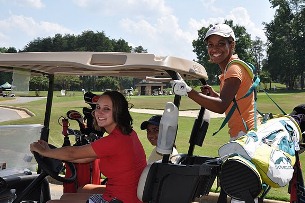 The Women in PGA Golf Management at North Carolina State University will host women from all 17 PGA universities around the country for an exciting girls-only conference including educational sessions on the golf industry as well as touring the Peter Millar Golf Apparel Company in Cary, NC. This unique event will conclude with the Women’s Carolinas Cup Golf Tournament at the Lonnie Poole Golf Course on the beautiful NC State campus.
The Women in PGA Golf Management at North Carolina State University will host women from all 17 PGA universities around the country for an exciting girls-only conference including educational sessions on the golf industry as well as touring the Peter Millar Golf Apparel Company in Cary, NC. This unique event will conclude with the Women’s Carolinas Cup Golf Tournament at the Lonnie Poole Golf Course on the beautiful NC State campus.

